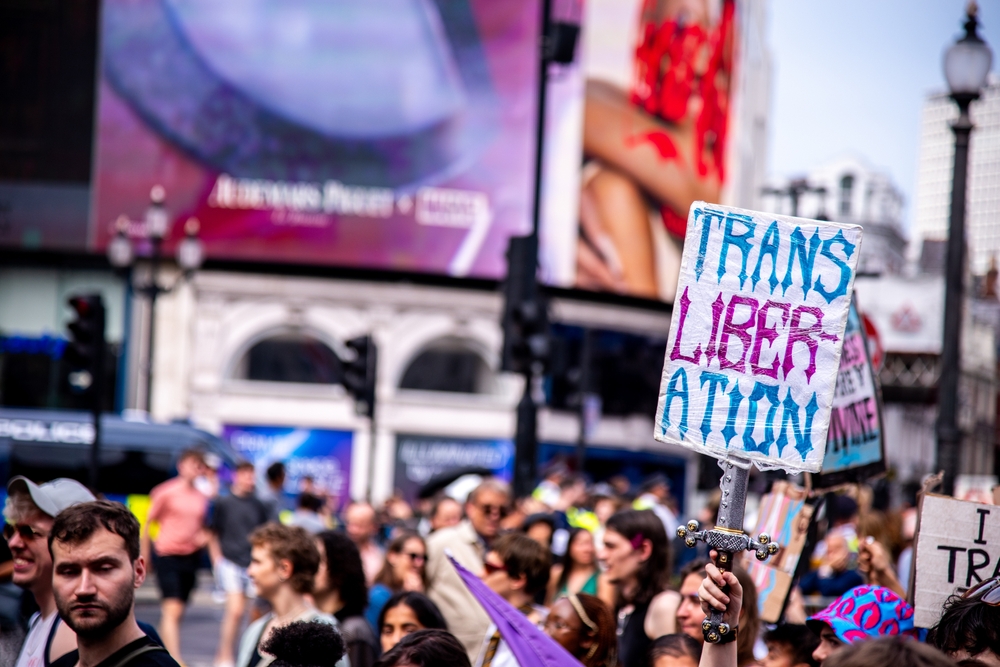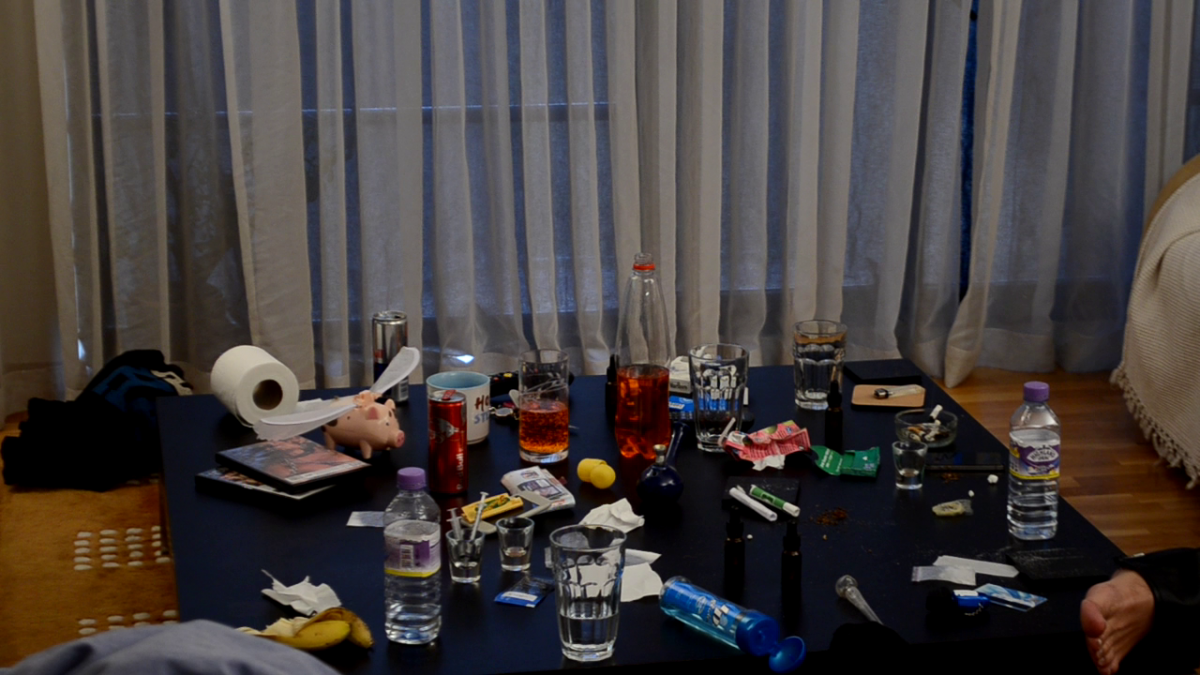I’m Natan Hermínio, a young black man from Brazil, born and raised in the favelas, who finds himself having to navigate every day the problems created by social exclusion and racism in my country. I had the chance to participate in an exchange programme between Brazil and Belgium through the ‘Ghent x Vila Cruzeiro’ project, which occurred during the ‘Ghent Youth Capital 2024’.
The aim of this project was, through socio-cultural work, to bring together five young people from Vila Cruzeiro, one of Rio de Janeiro’s favelas characterised by social abandonment and institutional racism, with young people from some of Ghent’s neighbourhoods such as Ledeberg, Nieuw Ghent, Rabot and Ghent Dampoort. The project hoped to make it possible for socially vulnerable young people from different contexts yet with similar traits to come together and artistically express their reality: what it is like to live on the margins within a society that provides little support and at times oppresses them.
We visited various spaces of social development (‘Juidhuis’, meaning youth houses or centres) of young people living in neighbourhoods and surrounding areas, offering activities for leisure, sports, art and education. At the end of all the visits, we compiled ideas and expressions from the participants, including us from Vila Cruzeiro, highlighting our common themes – including the ‘war on drugs’. The aim was to bring this knowledge to a meeting with Benjamin Dalle, the Belgian youth minister, to reveal the feelings of those who are often forgotten.
About youth centres
Belgium has several youth centres around the city that offer various activities and living spaces, a contrast from Brazil. VZW Jong Kaizerpark, located close to the centre, has a large public space for events, a basketball court with award-winning tournaments and indoor areas with sofas, video games and a kitchen.
Casa 09, located 500 metres from Jong Kaizerpark, is inside a former supermarket, and has a skate park, multi-purpose court, cinema and music studio, promoting artistic expression among young people.

Jeugdhuis Nieuw Ghent, in the Nieuw Ghent neighbourhood, is the only home in the region that caters for young people in situations of social vulnerability. It offers large indoor spaces, a stage for artistic performances and a music studio.
VZW Jong El Paso, in a neighbourhood with a large Turkish community, organises young people by age group and social condition, promoting community action and offering activities such as kickboxing, leisure, education and sports.

Close to El Paso are VZW Jong Minus One and VZW Ocup Sint-Jozefkerk. Jong Minus One focuses on introducing young people to sport, especially kickboxing, and has sports facilities and a hall for events.
Ocup Sint-Jozefkerk has transformed a former church into a centre for educational activities, with boxing classes, communal areas and a music studio, as well as a space for donations.

There is also VZW Jong Dampoort, next to a school, which offers sporting, educational and leisure activities, as well as donations and a space reserved for newly pregnant women. VZW Jong Ghent in Actie, which focuses on young people aged 10 to 17, offers social inclusion and participation in educational activities, including a cinema, music studio and podcast debates.

Reflections on Ghent and Rio de Janeiro
‘Ghent x Vila Cruzeiro’ sprung from the desire to provide young people in Ghent with a space to voice diverse forms of expressions. It is similar to the need felt by young people in Rio de Janeiro, who lack a place where they can be heard. The project aimed to make them active participants in shaping a society where they are included, rather than marginalised. Silenced by Brazilian societal racism and its various manifestations in what is a mostly white territory, it becomes almost impossible for young people to acquire a sense of hope and self-confidence, and to see themselves as a capable being.
With roughly 19% of its population born abroad, Belgium today has with a large immigrant population, a significant group seeking work and a life outside of their homes. For many, Belgium is also the former colonial capital: through violent and bloody power, they decimated entire generations in Congo, Rwanda and more, feeding from their riches to fuel their empire. Today, Turks, Moroccans, Algerians, Tunisians, Congolese and dozens of other former colonial communities continue to play a key role in building and sustaining the country who once saw as inferior and subjugated.
This is similar to the Brazilian context. Before, during and after Portuguese colonisation, the indigenous and Afro-diasporic populations were the country’s main sources of exploitation and wealth production. Its cruel past continues to this day. Brazil’s various regimes and successive governments continue to exploit this population; this structure of oppression remains in place, influencing the future paths of our society.
Young people need to be properly represented impactfully and that represents the diversity of its entire community. Today in Brazil, we are far from this reality. The formulation of public policies and service distribution is restricted to a privileged portion of society, leaving others incredibly vulnerable to the machinations of those are not interested in seeing the poor, Black, indigenous or brown as part of the community.
The question that remains is how will young people, made invisible by oppressive powers, be able to find their place in the future?
We cannot ignore class oppression
It’s impossible to ignore the reality of class oppression, which throws up walls and criminalises those who need the most support. We see this in Ghent and Rio de Janeiro. However, there are also important differences between the cities. In Brazil, the lack of quality public housing or social development services, like those seen in Ghent, can be fundamental tools to support vulnerable young people. Their absence makes this mission of bringing rights to neglected people much more difficult.
In Ghent, despite all the problems faced, young people can still count on the care of public authorities, civil society organisations, or partnerships bridging these two universes. Youth homes are more than just centres for young people to live in, they are also means of access to the most varied types of situations in life. Managed by professionals, the centres also provide the social support to help guide people through what uncertain futures. Whether the=rough art, education, sports and communication, they offer the chance to develop skills that will give people alternatives to being dragged into the drug war. While in Ghent it is not as violent as Rio de Janeiro, the drug war’s forces are still there; young people run the risk of losing their life, freedom, and their chance for influencing society if they get stuck in this violent war.
In Ghent, we see organisations working to reintegrate the ex-offender population into society, directly including them in workplaces, and preventing them from returning to the streets with no options. This is an example that could be followed by Brazil: we often fail to reintegrate those previously incarcerated, forcing them to look for informal work, with few protections or financial stability, meaning they can quickly go back to the illegal drugs market or even end up on the streets.
These practices could be applied to Brazil at a national level. But before this happens, we need to reformulate public policy proposals and who is participating in them. Too many are excluded from policy-making processes that directly impact them. Nowhere is this more visible than with the more than 7,500 homeless people living in Rio de Janeiro. These people are a key component of the population that was forgotten and made invisible by a society that dictates their future, rather than include them in its production.

The state must step in
The evaluation that remains is as follows: comparing Ghent and Rio de Janeiro, we realise that there is a gulf between these two realities, especially in how the government and its bodies deal with its people.
If Rio de Janeiro’s public agencies were more interested in partnering and supporting civil society organisations, as we see in Ghent, we would be able to reduce the number of people dependant on social services to survive. Civil society organisations play an essential role in supporting young and vulnerable people; they need to be celebrated, funded and supported by the state.
How can we positively transform our current social situation? What effective role should public authorities play in achieving this transformation? How long will non-governmental organisations continue to fill the gaps left by public bodies? These questions are crucial, especially when we are faced with the reality of thousands of people in Rio de Janeiro seeking a dignified life, confronted with institutional neglect. It’s time to define a clear path to ensure that our country moves away from poverty for good. Collective collaboration is essential: we need to act together and now, to do more and for the better of our society.


